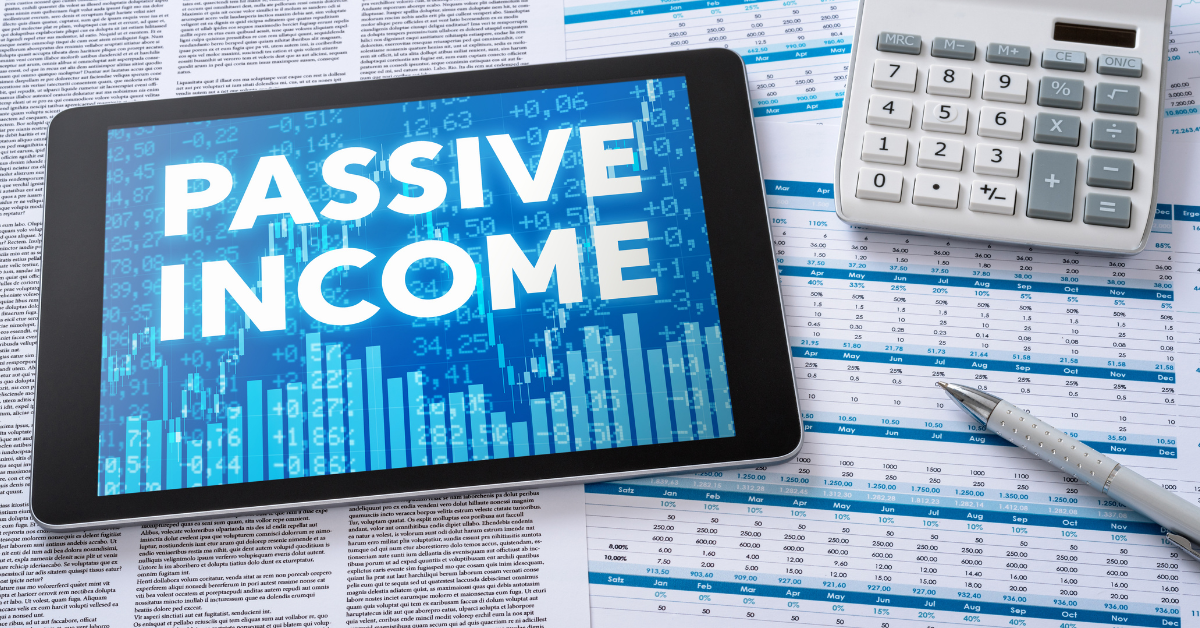Navigating the Rental Market: Trends and Opportunities for Passive Income
Reading Time: 6 minutesIn today’s dynamic real estate landscape, the rental market stands out as a lucrative avenue for generating passive income. Understanding the trends and opportunities within this market is essential for aspiring real estate investors seeking financial freedom. In this guide, we’ll delve into the rental market’s intricacies, providing insights and strategies to capitalize on its…

In today’s dynamic real estate landscape, the rental market stands out as a lucrative avenue for generating passive income. Understanding the trends and opportunities within this market is essential for aspiring real estate investors seeking financial freedom.
In this guide, we’ll delve into the rental market’s intricacies, providing insights and strategies to capitalize on its potential for passive income generation.
Table of Contents
The Rental Market Landscape
The rental market, a vital segment within the real estate industry, is subject to dynamic influences, including demographic shifts, economic conditions, and evolving housing preferences. To effectively navigate this landscape, investors must grasp its current state and emerging trends.
Today, rental property investment is characterized by constant evolution, driven by emerging trends that redefine its contours. Innovations such as co-living spaces, short-term rentals, and sustainable housing solutions are gaining momentum, offering investors fresh avenues for exploration and capitalization. Understanding these trends is essential for investors seeking to capitalize on the evolving rental market.
Identifying Opportunities for Passive Income

Identifying opportunities for passive income in the rental market requires understanding market trends, demand drivers, and various niche segments. Here are some avenues for passive income in rental property investment:
1. Traditional Long-Term Rentals
Long-term rentals, such as residential apartments or single-family homes, offer stable and consistent rental income streams. Investors can benefit from steady cash flow, tenant stability, and potential appreciation in property value over time. Market research on population growth, employment trends, and rental demand in specific neighborhoods can help identify lucrative opportunities for long-term rental investments.
2. Vacation Rentals
Vacation rentals, such as Airbnb or VRBO properties, cater to short-term tenants seeking temporary accommodation for leisure or business travel. These properties often command higher rental rates, especially in popular tourist destinations or major cities. Investors can capitalize on seasonal demand fluctuations and special events to maximize rental income from vacation properties. Additionally, furnishing properties with amenities and offering personalized experiences can attract higher-paying guests.
3. Student Housing
Student housing properties cater to college or university students seeking off-campus accommodation during the academic year. Investing in student housing markets near universities can provide stable occupancy rates and consistent rental income. Understanding enrollment trends, student population demographics, and university expansion plans can help identify promising opportunities in the student housing sector. Properties with proximity to campus, amenities, and transportation options are highly desirable for student tenants.
4. Senior Housing
Senior housing properties, including assisted living facilities, independent living communities, and senior apartments, cater to elderly residents seeking retirement living options. Investing in senior housing can offer stable cash flow and long-term demand due to demographic trends. Market research on aging population demographics, healthcare infrastructure, and lifestyle preferences can guide investment decisions in the senior housing sector. Properties with amenities tailored to senior residents’ needs, such as accessibility features and social activities, are in high demand.
5. Short-Term Corporate Rentals
Short-term corporate rentals target business travelers and corporate relocations seeking temporary housing solutions. These properties offer furnished accommodations with flexible lease terms, appealing to professionals on short-term assignments or corporate executives. Investing in areas with corporate headquarters, business districts, and major employers can yield opportunities for short-term corporate rental investments. Properties with proximity to transportation hubs and business amenities are attractive to corporate tenants.
6. Real Estate Investment Trusts (REITs)
REITs allow investors to gain exposure to diversified real estate portfolios across various sectors, including residential, commercial, industrial, and healthcare properties. Investing in REITs offers passive income through dividends and potential capital appreciation. Researching REIT performance, sector trends, and distribution yields can help investors identify REIT opportunities aligned with their investment goals and risk tolerance. Additionally, investing in REITs provides liquidity and professional management without direct property ownership responsibilities.
Understanding Tenant Preferences and Demands

Tenant preferences and demands play a significant role in shaping rental market dynamics. Investors must understand and cater to these preferences to attract and retain tenants effectively. Factors such as location, amenities, and affordability influence tenant decisions and should be considered when investing in rental properties.
1. Location
- Identify neighborhoods and areas with high demand for rental properties based on factors such as proximity to employment centers, schools, public transportation, amenities, and safety.
- Consider tenant demographics and lifestyle preferences when selecting locations. For example, young professionals may prefer urban areas with access to nightlife and entertainment, while families may prioritize school districts and parks.
2. Amenities and Features
- Understand the amenities and features that appeal to target tenants. This could include in-unit laundry facilities, parking spaces, outdoor spaces, fitness centers, and pet-friendly policies.
- Stay informed about emerging trends and preferences in rental housing, such as smart home technology, eco-friendly features, and communal spaces for coworking or socializing.
3. Affordability
- Evaluate rental rates and affordability relative to local income levels and market conditions. Offering competitive rental prices can attract tenants and minimize vacancies.
- Consider the overall cost of living in the area, including utilities, property taxes, and maintenance expenses, when determining rental rates.
Analyzing Market Data and Insights
Informed investment decisions rely on robust market data and analysis. Utilizing tools and resources for rental market research empowers investors to identify promising investment opportunities, assess property performance, and anticipate market trends effectively.
Here’s how investors can utilize tools and resources for rental market research:
1. Real Estate Market Reports
Many organizations, including real estate agencies, research firms, and government agencies, publish regular market reports. These reports provide valuable insights into market trends, including vacancy rates, rental rates, sales prices, demographic shifts, and economic indicators. Investors can leverage these reports to understand the overall health of the market and identify promising investment opportunities in specific locations.
2. Online Databases and Platforms
Some numerous online databases and platforms aggregate real estate data, such as Zillow, Redfin, Realtor.com, and CoStar. These platforms offer access to a wide range of information, including property listings, historical sales data, neighborhood demographics, school ratings, and rental market trends. Investors can use these platforms to conduct comparative market analyses, evaluate property performance, and identify potential investment properties.
3. Rental Market Analysis Tools
Several specialized tools and software solutions are designed specifically for rental market analysis. These tools allow investors to analyze rental market trends, estimate rental yields, calculate cash flow projections, and perform sensitivity analyses. Some popular rental market analysis tools include Rentometer, Mashvisor, and Roofstock’s investment property calculator. By inputting relevant data such as rental rates, expenses, and financing terms, investors can gain valuable insights into the potential returns of different investment properties.
4. Local Economic Data
Understanding the local economic conditions is crucial for assessing the rental market’s health and growth prospects. Investors can access economic data from sources such as government agencies, chambers of commerce, and economic development organizations. Key economic indicators to consider include employment growth, income levels, population growth, and industry diversification. By analyzing these factors, investors can gauge the demand for rental properties in a particular market and anticipate future trends.
5. Networking and Industry Insights
Building relationships with local real estate professionals, property managers, landlords, and fellow investors can provide valuable market insights and firsthand knowledge. Attending real estate events, networking groups, and industry conferences can also offer opportunities to learn about market trends, investment strategies, and emerging opportunities. Additionally, joining online forums and social media groups focused on real estate investing allows investors to engage with peers and exchange valuable information and experiences.
Assessing Investment Risks and Rewards
Like any investment, the rental property comes with its own set of risks and rewards. Understanding and mitigating risks while maximizing returns is essential for long-term success in the rental market.
To optimize returns and mitigate risk, begin by diversifying your investment portfolio across various types of properties, geographic locations, and asset classes. Exploring niche markets like vacation rentals, student housing, or senior housing can leverage unique demand drivers, enhancing income potential.
Next, conduct comprehensive due diligence on potential investment properties. This entails thorough property inspections, financial analysis, market comparables, and meticulous tenant screening. Assess each opportunity’s risks and rewards, taking into account factors such as rental income potential, property appreciation, vacancy rates, and maintenance costs.
Once investments are secured, implement effective property management strategies to safeguard returns. Proactive maintenance, prompt tenant communication, financial management, and adherence to regulations are paramount. Consider outsourcing management tasks to professional firms, especially if time or expertise is limited. This ensures efficient operations and maximizes returns over the long term.
Conclusion
The rental market presents abundant opportunities for passive income generation and wealth building. Embrace the insights and opportunities presented in this guide to embark on a successful journey toward financial independence through rental property investment.
Ready to navigate the rental market with ease? Partner with Green Ocean Property Management for peace of mind. Maximize your passive income potential today!
Maximizing Income and Convenience Through a Coin-Op Laundry
Reading Time: 2 minutesAre you a property owner seeking to optimize your building’s amenities while boosting revenue? Imagine a solution that caters to your tenants’ needs and helps you cut down on utility expenses. At Green Ocean Property Management, we’ve recently taken a proactive step by installing coin-operated laundry facilities in the basements of our buildings. This article…
Dormer Addition for Multifamily Homes with Green Ocean Property Management
Reading Time: 3 minutesAre you a property owner looking to increase your multifamily home’s value and rental potential? Building a dormer could be the key to unlocking additional living space and maximizing your property’s earning potential. At Green Ocean Property Management, we understand the intricacies of construction projects like a dormer addition and can guide you through the…
How We Plan Out Renovations
Reading Time: 2 minutes Renovations entail a lot of planning, but you don’t have to do it alone. We plan out renovations in a way that no penny or day is wasted. In today’s article, we will explain how our staff will handle your renovation and get it done extremely quickly. There will be no missed days or…








